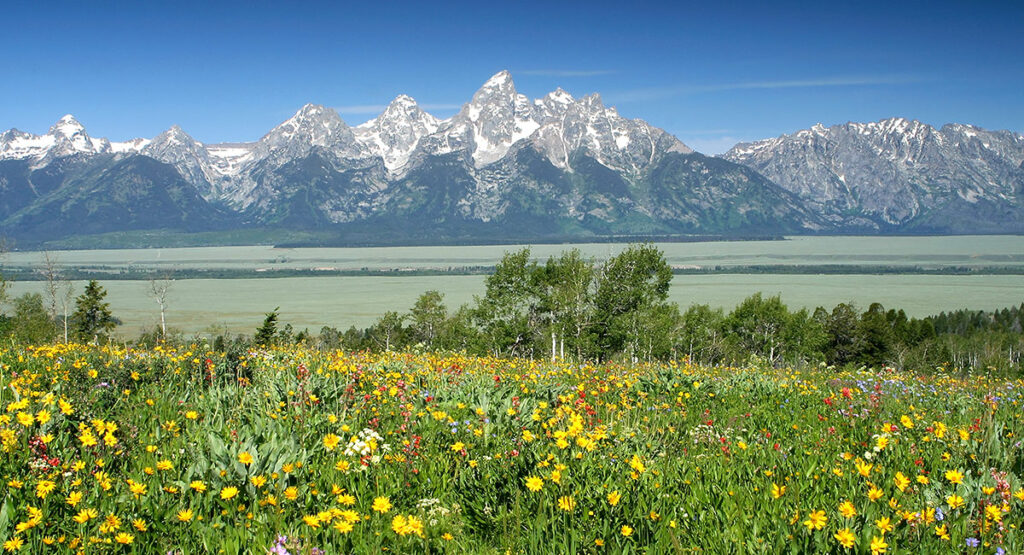Trip Report – Solo Mission Teton Pass to Mosquito Creek
by Scotty M. – April 4, 2022
The Green Knoll fire area represents a broad swath of skiable terrain for mid to low elevations that can be the needed passage to put together a tour to the valley floor. I had done this route once before, with Virgie Bryan, under pretty good conditions, and I had been watching the exit route snow cover for a few weeks, knowing that it was tenuous, and getting more so by the day.
The day dawned sunny and clear and there was stormy weather in the forecast. I had my doubts. It was 35° at the Mosquito Creek turnoff, when I stashed my rollerblades at 8:15 a.m. When I got to the top of Teton Pass, it was 35°. I had more doubts. But the snow surface remained crisp, and I knew I could turn around at anytime before Mt. Elly (and a little beyond), and retrace my steps at little to no cost, so I wasn’t really worried.
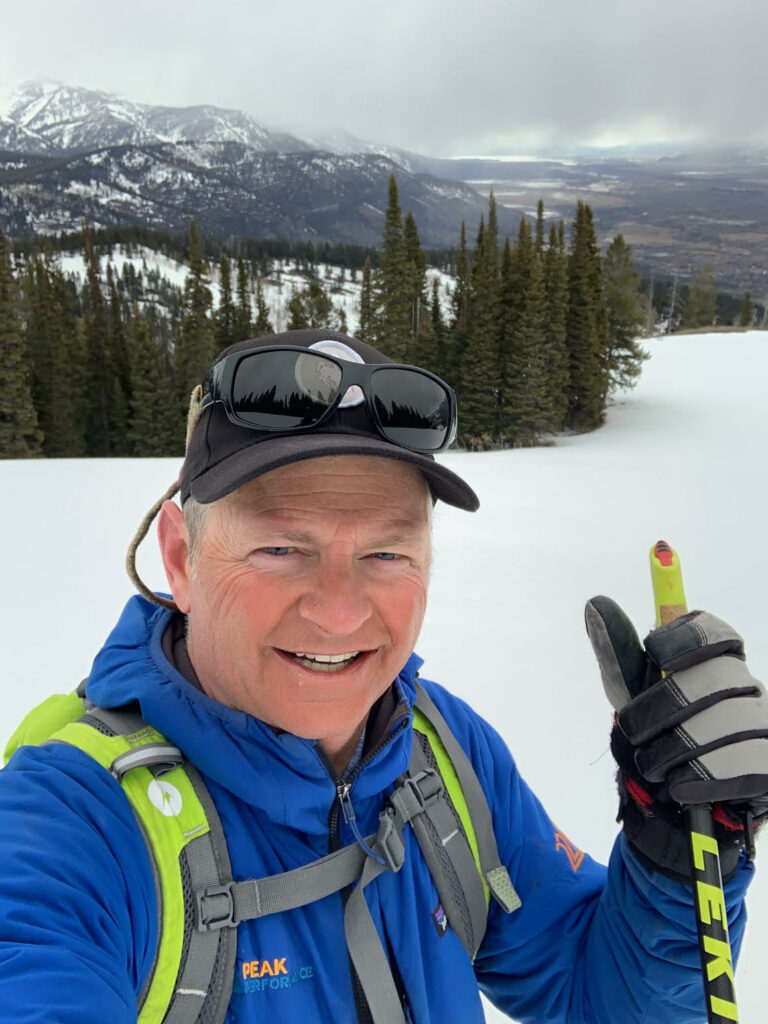
To my pack, I strapped the skate poles and skis, with boots in bindings, and started off on foot. The skin track leading south from the pass was firm and supportable, unless one wandered off to the side, in which case shoe penetration was only half an inch or so.
Before the top of Elly, I stopped to slip into my skate boots and began to skate. The breakable but forgiving crust in these low angle north aspect trees was a harbinger of conditions to come. Topping the ridge, I dropped in on the south facing firm snow and navigated to the Black Canyon Mosquito Creek saddle, making broad arcing turns on the largely trackless firm but somewhat rough corny surface.
I had planned a route slightly north of and below the ridge, sometimes a useful tactic to minimize the ups and downs, and to avoid ridgetop south facing bare areas that the wind scoured ridge often presents. I was frequently looking down, imagining a clearer smoother path about 100 feet below, but was reluctant to sacrifice the vertical for uncertain ease-of-sidehilling gains. There were tight pockets, downed trees and micronavigational cruxes. This traversing made for a fair bit of tedious routefnding across steep and variable snow, but let me emerge from the forest in the western most corner of the burn area. “Props to GPS!” and “Home Free!” I thought.
I was still concerned about sun warming turning the supportable surface into hazardous quicksand with a sheen of breakable. But the skies had grayed, and there were no signs of softening. The wind picked up, and there was snow hanging from the cloud ceiling, like bacon smoke in a fanless kitchen. The crust was rough, but skiable in all directions. I made huge skating traverses. To explore this burn, flank to flank, at high speeds, with the sweeping views of the Snake and the east scarp…was just what I came for. Conditions were…okay…a 6 out of 10, but unquestionably supportable, crunchy and a bit rough from uneven snow at the last corning.
I made my way through increasingly bushwhacky conditions, trending south and right, connecting snow patches to finally connect with the exit trail. I slid out of skate boots and into my Salomon trail runners. It was a short 6 minute walk to the Mosquito Creek road closure trailhead, marked on the topo map as ‘4WD Road,’ and a mile to Fall Creek Road.
There, I slipped into stashed rollerblades and enjoyed some more skating on uneven chip seal into the rising storm, about 4 miles to Wilson, where the first truck to see my outstretched thumb pulled over and gave me a lift to close the loop.
Teton Pass to Mosquito Creek is a five star skate ski mountaineering training route with a great further-away and yet escapable feel, and relatively simple logistics. This can be a great route on AT or NNN BC setups, and it’s rare that it’s doable on skate skis, but when it is, how sweet it is. I’ll be back for this kind of adventure again! Scotty M.
Watch the video of the tour here!
WARNING: ROSY DEPICTIONS OF SKI CONDITIONS MAY BE NOT BE REPRESENTATIVE OF OTHER USERS’ EXPERIENCE.
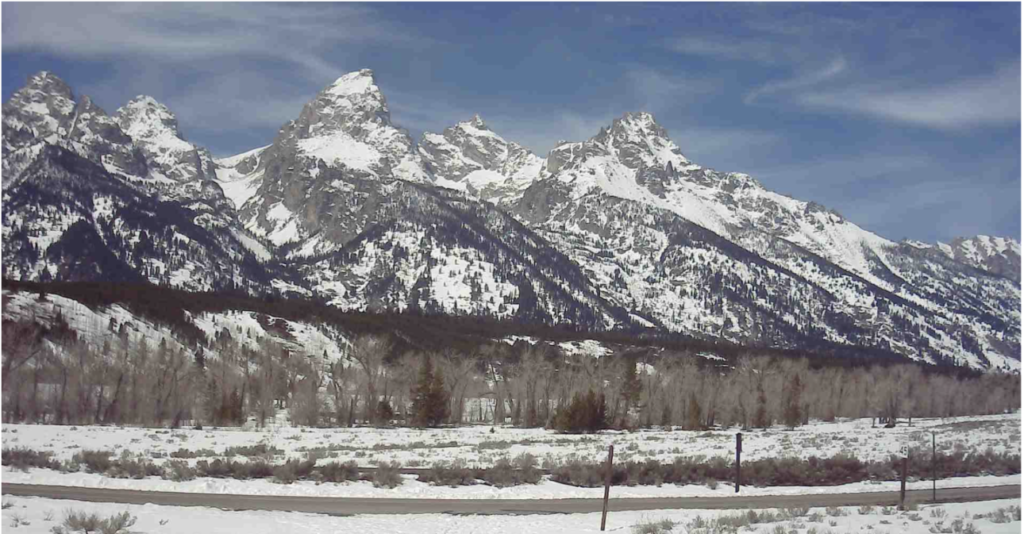
Live Conditions
Curious about current conditions in the park? The JH Nordic GTNP webcam on the JHNordic.com home page provides a view of the Grand Teton and Teton Park Road, refreshing every 15 minutes! Webcam is located just north of the Taggart Lake trailhead.


Gravel Cycling: A Good Fit for Off-Snow (Dryland) Training for Masters Cross Country Skiers
Betsy and Bob Youngman are accomplished masters Nordic skiers and have excellent training tips year round. As we move into spring and summer activities, here’s their latest fun training tip for gravel biking.
Traditional dryland training for cross country skiing athletes includes an emphasis on base aerobic development utilizing running or running-like activities such as aerobic mountain (or hilly) running, aerobic and high intensity interval bounding with poles, and, possibly, high intensity interval track running. Running is a high impact activity and injury is common among all runners. In fact, it has been estimated that among the general runner population, as a group, over 50% are injured at least once during any 12-month period, and this injury rate is even higher for competitive runners. These injuries are primarily due to foot-related, knee-related, and leg-related musculature issues such as Achilles tendonitis, plantar fasciitis, patellofemoralsyndrome, iliotibial band (IT band) syndrome, and various types of stress fractures. Given this high injury rate, it is desirable to identify other effective training modalities for cross country skiing that can be used in concert with or as a replacement for running-type modalities when injured. It is also desirable for some athletes, especially those who are more prone to running-related injury, to replace some of their running-based training with alternative modalities that minimize the probability of injury.

What Happens During Bear Hibernation?
By EcoTour Adventures
Well, it’s not really a slumber, contrary to popular belief! Let’s dig a bit more into bear hibernation, shall we?
Here in the Greater Yellowstone Ecosystem, we have black bears and grizzly bears, and both species hibernate in the winter, although the word “hibernate” is used loosely. Many biologists consider bear hibernation to not be a true hibernation, as the bears are quite alert in their dens. Instead, they enter a “light” hibernation known as torpor. They maintain a body temperature that is close to normal–dropping to between 86-95°F (30-35°C), which is only a small departure from their normal body temperature of 100°-101°F (37.7°-38.3°C). This enables them to react quickly to danger as they do not need to wait for their body to warm up first.

Grooming is finished in most places for the season, but there are still opportunities for ungroomed skiing!
Crust cruising in GTNP continues at the mid to northern end (higher valley elevations) in GTNP. Selected higher elevation trails such as Rosie’s Ridge, CD Trail, Flagstaff trail (Togwotee Pass region) may have sufficient snow to XC ski. Fat Biking is well suited to the in-between season, as long as the trail surface is not muddy (go on the early side while trail are frozen).
TVTAP is reporting that they are done grooming for the season with Teton Canyon’s last grooming this past Wednesday. Skiing is still allowed as long as the snow coverage persists. With colder weather this week, snow may last a short while.
Grand Targhee
Closing Day April 10th
Grooming Schedule: Tuesday, Thursday, Saturday & Sunday
Last Updated: 4/9
Cross Country 15k: XC OPEN
Fat Bike Trails : Open
Snowshoe Trails: Open

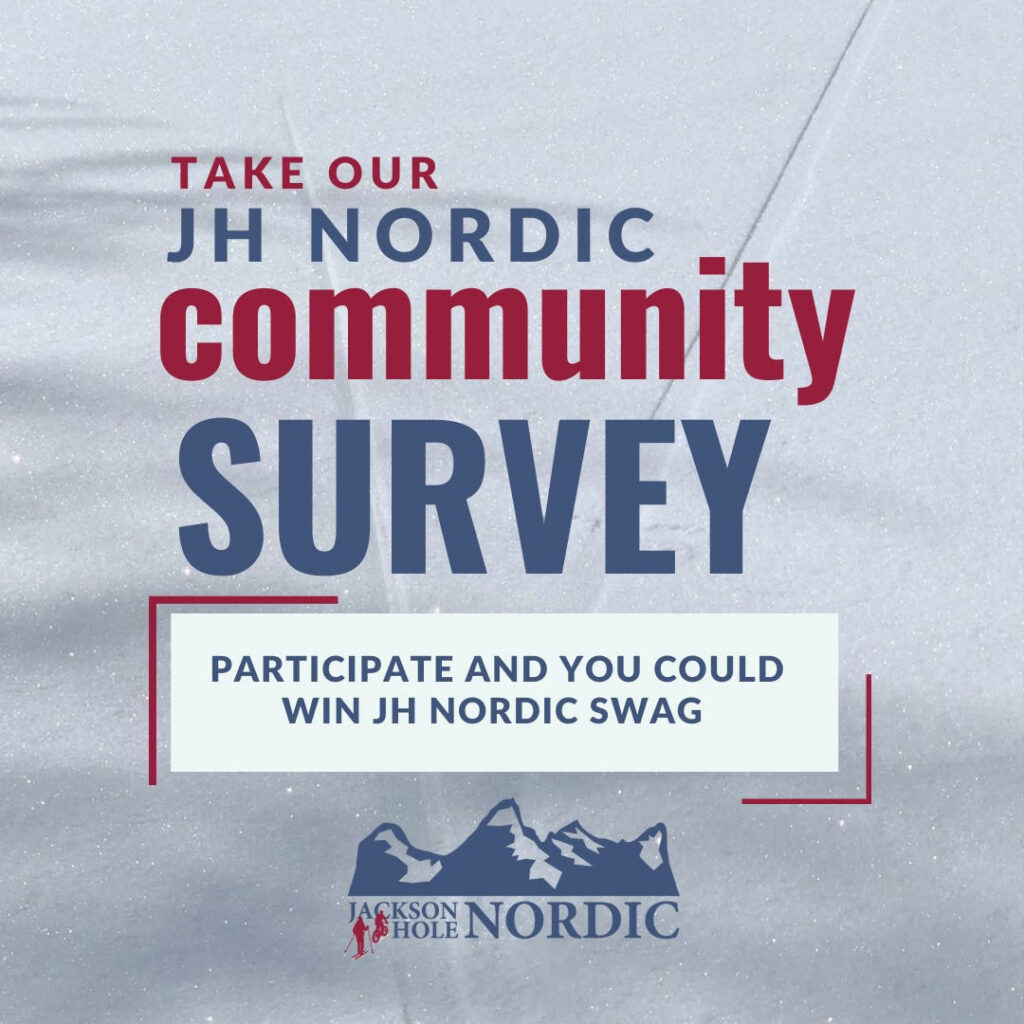
Take our JH Nordic Community Survey
JHNordic is hosting this survey to assist us in improving our digital platforms and community information services on Jackson Hole Winter Trails recreation – Nordic skiing, fat biking & snowshoeing! JH Nordic is community-based and designed for you – we want to learn from you! Thanks to past surveys, we have updated many features!
The 𝐦𝐚𝐢𝐧 𝐠𝐨𝐚𝐥𝐬 of this survey are to gain a better understanding of how our users and community interact with JH Nordic’s digital media (website, blog, email, Instagram, Facebook, and YouTube) to improve your experiences and meet your needs. Estimated time: 5 to 10 minutes.
Participants will have a chance to win JH Nordic swag!
Take Photos of Your Spring Adventures before the Snow Melts!
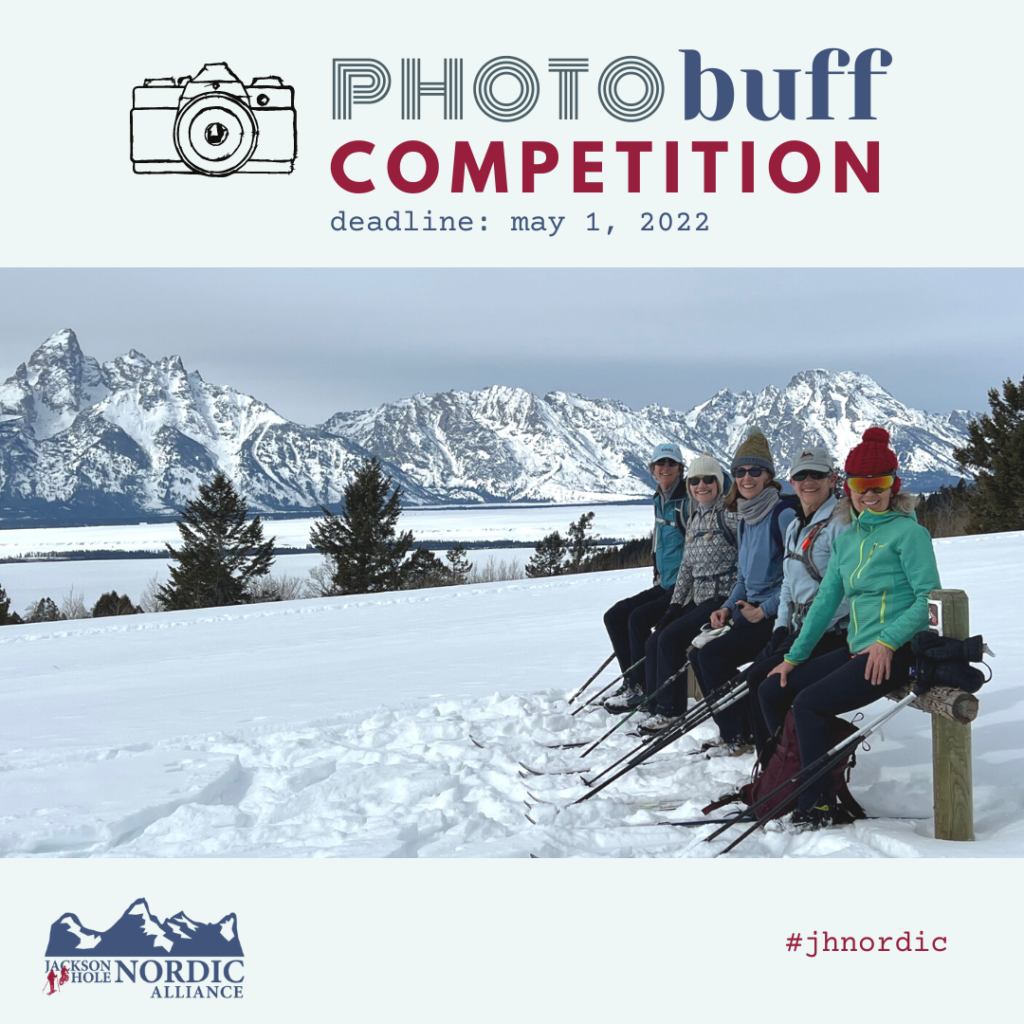
Submit your best photos of your winter season and your photo could be on the 2022-23 JH Nordic buff. This unique buff is manufactured by a local company, Avalon 7.
The first-place winner will receive 10 of the new buff (value $200) and prizes from JH Nordic Alliance members like Stio, Kate’s Real Food, Friends of Pathways, JD High Country Outfitters, The Hole Hiking Experience, Trilipiderm, Skinny Skis, and more!
Contest deadline: May 1, 2022.
We’d love to hear about your outdoor adventures, what your doing to stay healthy, safe, respectful of community health guidelines – send pictures or post on FB and Insta – #JHNordic


